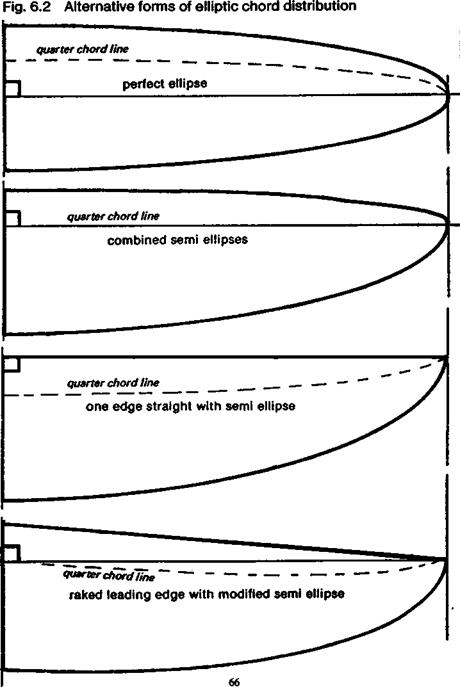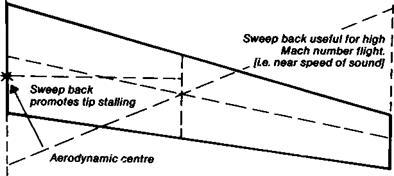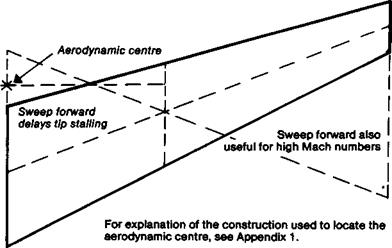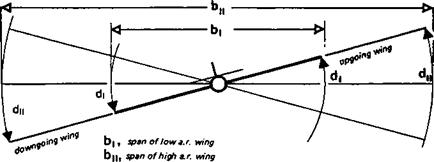6.1 PLANFORM OF WINGS
Aspect ratio is by far the most important factor in reducing vortex drag, but some model aircraft designers throw away part of the advantage gained from high a. r. by carelessness in detail. As suggested in Figure 5.2., the aerodynamic or effective span of any wing is always slightly less than the physical length of the surface, because the tip vortex leaves the wing slightly in-board of the tip. A bad choice of tip shape, or a bad planform, or a wing with too much or too little twist (variation of rigging angle from place to place), reduces the effective wing span: the wing will behave as if it were smaller in both area and aspect ratio. The factor ‘k’ in the induced drag equation will enlarge.
6.2 THE RECTANGULAR WING
The easiest type of wing to build is one with rectangular plan. All the ribs are identical and there are no awkward joints in leading or trailing edge members. Such a planform is not the best aerodynamically, the basic reason being that some parts of such a wing are underemployed, not carrying their fair share of the model’s weight.
The circulation of air and vortex strength over one part of a wing influences the direction of flow over the adjacent parts and changes the local angle of attack. With a rectangular wing the tip vortex is strong and hence the downwash near the tip large. The closer a segment lies to the tip, the more it is influenced by the vortex. The section angle of attack near the tip, and hence the section ci, is reduced and almost zero. Thus, although the wing chord is constant, the load carried by each choidwise section falls off sharply towards the tips. The wing, even with no geometric twist, works at reducing aerodynamic angles of attack over the whole outer span, with the result that the load distribution resembles that sketched in Figure 6.1a.
Assuming the wing is of constant aerofoil section throughout, the maximum possible section ci, at each point is the same. Since, however, the tips are at a lower angle of attack, , they are still well below the stalling angle when the roots reach it The rectangular wing thus has an inherently safe stalling character, the wing in the centre stalls while the tips are still lifting. There is no tendency for a tip to drop first. If the model is radio controlled, the ailerons remain effective over the outer sections even when the centre is on the verge of’ stalling. Such wings need no geometric washout, but this is at a cost in terms of effective wing loading. If some of the area were taken from the tips and distributed over the central portions of the wing, the wing as a whole would stall later, at a higher total Cl, since the total Cl is made up of the average of all the section ci’s across the span.
Fig. 6.1 Planforms and load distributions
b
|

|

When a model wing is drawn out with a certain total area, it is too easily assumed that each part of it will carry a share of load which is in proportion to the area at each point This is encouraged by the simple expression (see Chapter 2) for wing loading, W/S, which implies that weight divided by total area gives a true standard of comparison between models of various types. If, however, because of bad planform, some parts of a wing are relatively idle, the rest has to take on an extra burden. This implies that while one portion of the wing is lifting very little, working at a low Cl, the other parts are at higher Cl to compensate. As the equation for induced drag shows, (CDi= (Cl2/3.142 x A) x k) increasing Cl (or cj, the section lift coefficient at a point along the span in this case) causes vortex drag to rise proportionally to the square of Cl, so the drag of the whole wing is higher. At the same time, die idle part of the wing still contributes some skin drag and profile drag. Such a bad distribution of lift is reflected in the planform correction factor, k. Noticeable losses of performance can result





















